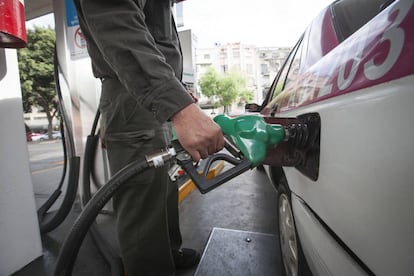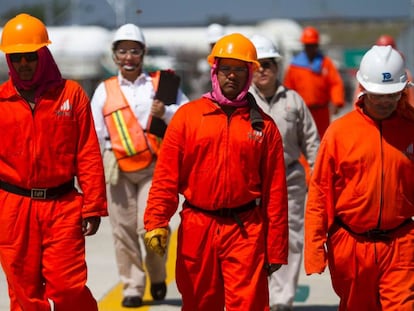Mexico readies for liberalization of its gasoline market in 2017
Plan to end decades-long monopoly in the oil industry will roll out from March

The road to competitive gasoline prices in Mexico will begin at the US–Mexico border in early 2017 and end in 2018 when the entire country will be selling fuel at market rates. Mexico’s Energy Regulatory Commission (CRE) has unveiled a roadmap to bring an end to the 79-year-old state monopoly on refined hydrocarbons managed by Petróleos Mexicanos (Pemex), the clearest step so far toward implementation of President Enrique Peña Nieto’s 2013 energy reform law.

On March 30, 2017, gasoline stations in Baja California and Sonora will begin selling fuel at the going rate on the international market. The CRE said it chose to start in this area because of its proximity to the United States and its many oil import routes. The border region accounts for 25% of all oil consumed in Mexico, while its extensive industrial sector will encourage competition, says the regulator.
Final prices at the pump will reflect those on the international markets, as well as the cost of transportation, storage and processing, the profit margin of each company, taxes, and the peso-to-dollar exchange rate. The measures will see the emergence of new companies to supply and distribute fuel.
The number of gas stations in Mexico is expected to double in coming years
The second stage in the opening up of Mexico’s gasoline market will kick off on June 15 in the states of Chihuahua, Coahuila, Nuevo León and Tamaulipas.
On October 30 – after the summer, when prices rise considerably – Baja California Sur, Sinaloa and Durango will join in. The most complex phase will begin on November 30, when 20 states from the Bajío region and central Mexico are expected to float their prices. The southern states of Campeche, Quintana Roo and Yucatán will be the last three to remove price controls.
“We are moving away from a single model based on a national standard that involves a set of prices pegged to a single national price that does not recognize regional difference and where adjustments to international prices only come after a certain delay, and where there is nothing to encourage the industry to invest,” CRE president Guillermo Alcocer explains.
There are 11,490 gasoline stations in Mexico, and the commission says that number may double in coming years. Alcocer estimates that investments in the gasoline sector could reach $12 billion.
Pemex will allow private companies entering the market to use its infrastructure. Mexico has 17,000 kilometers of pipelines and 89 freight terminals that will gradually open up to competition. The federal attorney general’s office will supervise the commercialization of the sector to avoid abuses along the distribution chain.
Final prices at the pump will reflect everything from the world oil price to taxes and the peso-to-dollar exchange rate.
Energy regulators say that opening up the gasoline market will require warehousing more reserves to respond swiftly to emergencies or shortages. Mexico will need to store at least 10 days’ worth of reserves. “They will only be used in extraordinary cases,” said Aldo Flores, Deputy Secretary of Energy for Hydrocarbons. In 2025, Mexico is expected to store 15 days’ worth of reserves.
In the meantime, until gasoline prices are allowed to float, the Mexican treasury will continue to fix the maximum price at the pump as it has done throughout 2016.
English version by Dyane Jean François.
Tu suscripción se está usando en otro dispositivo
¿Quieres añadir otro usuario a tu suscripción?
Si continúas leyendo en este dispositivo, no se podrá leer en el otro.
FlechaTu suscripción se está usando en otro dispositivo y solo puedes acceder a EL PAÍS desde un dispositivo a la vez.
Si quieres compartir tu cuenta, cambia tu suscripción a la modalidad Premium, así podrás añadir otro usuario. Cada uno accederá con su propia cuenta de email, lo que os permitirá personalizar vuestra experiencia en EL PAÍS.
En el caso de no saber quién está usando tu cuenta, te recomendamos cambiar tu contraseña aquí.
Si decides continuar compartiendo tu cuenta, este mensaje se mostrará en tu dispositivo y en el de la otra persona que está usando tu cuenta de forma indefinida, afectando a tu experiencia de lectura. Puedes consultar aquí los términos y condiciones de la suscripción digital.










































